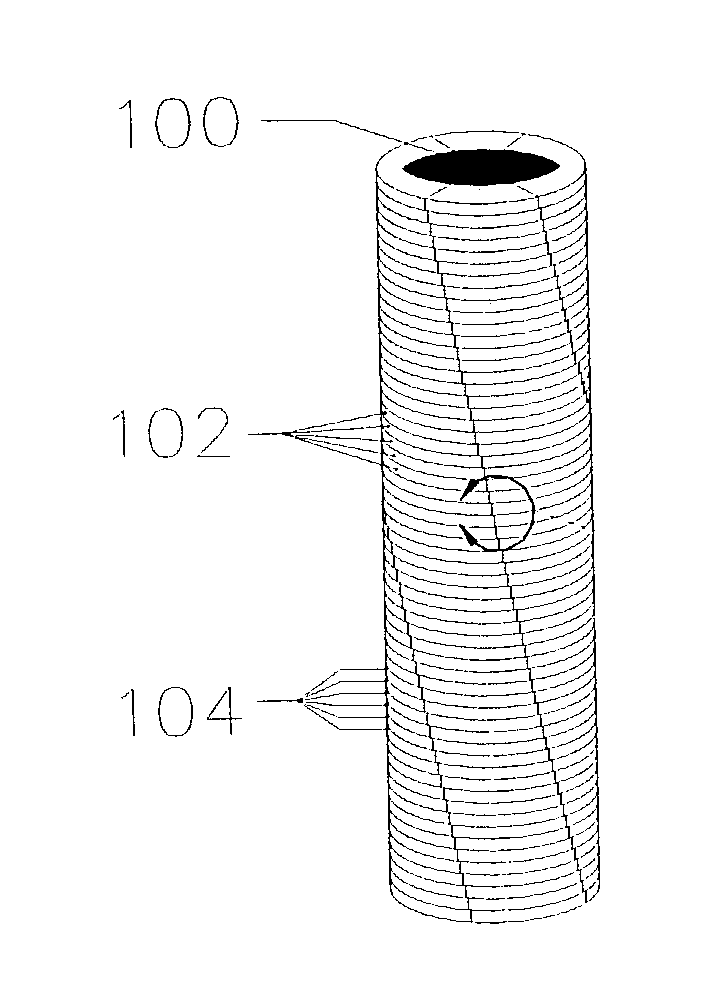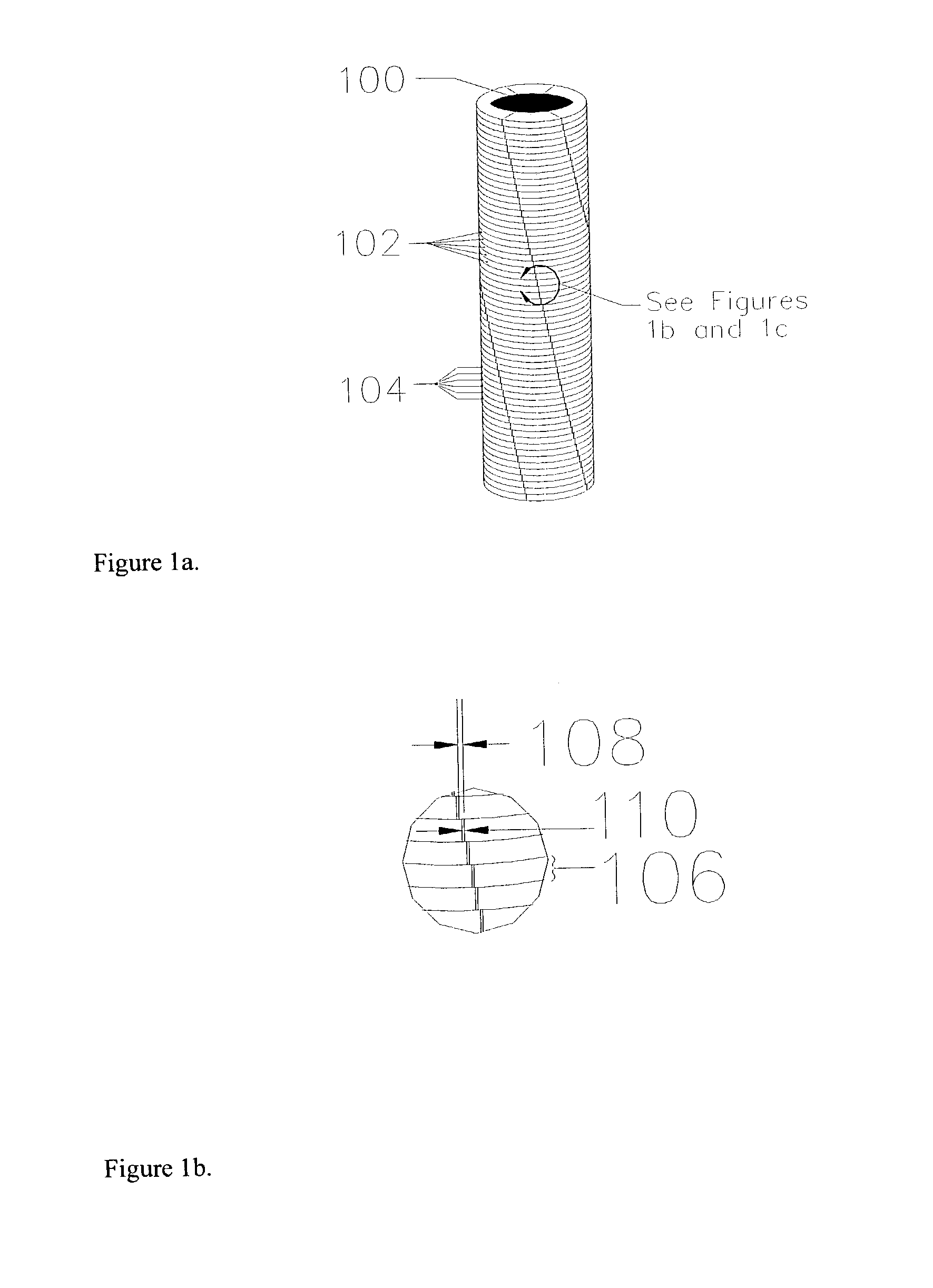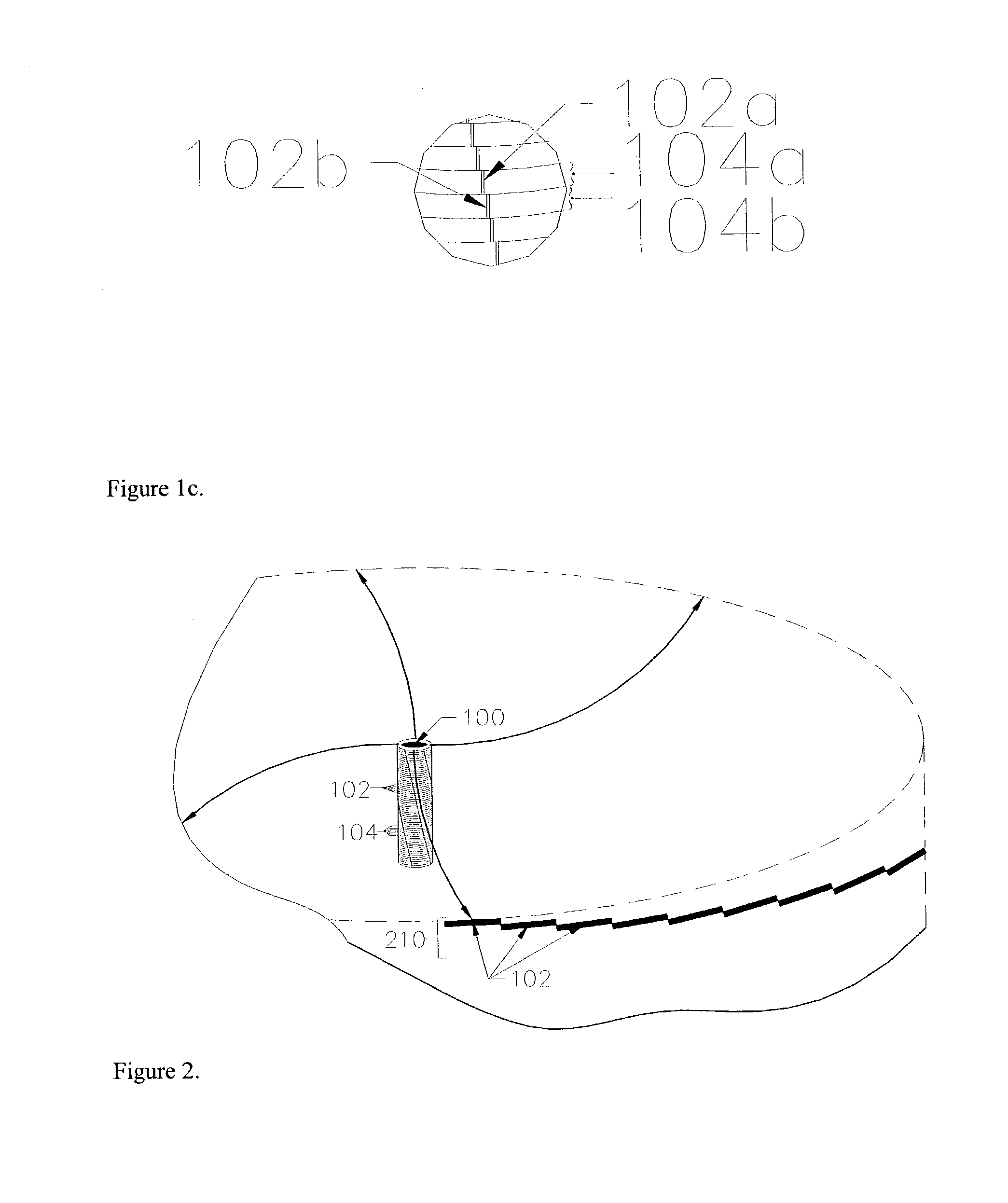Segmented-rod warhead
a technology of warheads and segments, applied in the direction of weapons, fall bombs, ammunition projectiles, etc., can solve the problems of metal warhead casings almost instantaneously catastrophic failure, large heat and gaseous products generated by secondary high explosive cores, and damage by concussion (blast effects), so as to achieve greater cumulative and synergistic effects, the effect of weakening the targ
- Summary
- Abstract
- Description
- Claims
- Application Information
AI Technical Summary
Benefits of technology
Problems solved by technology
Method used
Image
Examples
Embodiment Construction
[0035]The invention, as embodied herein, comprises a cylindrical warhead designed to provide a number of spiraling tendrils composed of segmented circular rods that move collectively in an increasing radial arc in order to defeat a target. The warhead comprises a substantially cylindrical energetic charge having a plurality of circular rod segments arranged circumferentially around the explosive charge in a plurality of horizontal layers (approximately perpendicular to the axis of the warhead). As the horizontal layers descend down the length of the explosive charge, the rod segments are offset from those directly above and below them to create a pattern that appears to be twisted helical columns. The number of columns is equivalent to the number of rod segments in each horizontal layer.
[0036]Referring to FIGS. 1a–1c, the invention comprises a warhead having a substantially cylindrical energetic charge 100 surrounded by a plurality of circular rod segments 102. The rod segments are ...
PUM
 Login to View More
Login to View More Abstract
Description
Claims
Application Information
 Login to View More
Login to View More - R&D
- Intellectual Property
- Life Sciences
- Materials
- Tech Scout
- Unparalleled Data Quality
- Higher Quality Content
- 60% Fewer Hallucinations
Browse by: Latest US Patents, China's latest patents, Technical Efficacy Thesaurus, Application Domain, Technology Topic, Popular Technical Reports.
© 2025 PatSnap. All rights reserved.Legal|Privacy policy|Modern Slavery Act Transparency Statement|Sitemap|About US| Contact US: help@patsnap.com



